Lenovo Legion 5i Pro (16″ Intel, Gen 6) review – solid performance and great build quality in one place
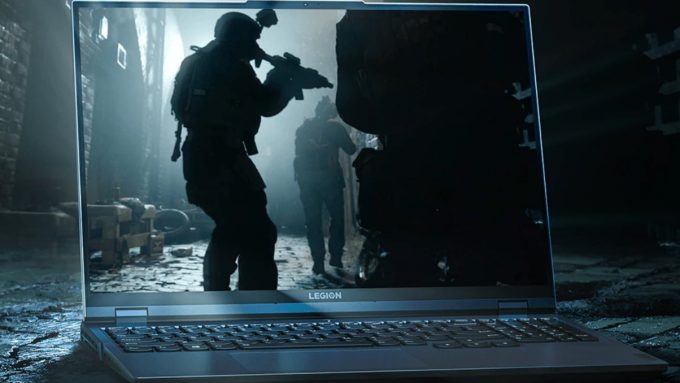 When we reviewed the AMD variant of Lenovo Legion 5 Pro (16″) we concluded that it’s a solid device. This time we’ll examine the performance of the Lenovo Legion 5i Pro (16″) – this one got the same chassis as its sibling, but the word “i” in the name reminds us that we have an Intel-based device. That’s right, this series can be configured with Intel Tiger Lake H45. This is a breath of fresh air because these CPUs are more refined and powerful compared to the 10th-gen Comet Lake chips.
When we reviewed the AMD variant of Lenovo Legion 5 Pro (16″) we concluded that it’s a solid device. This time we’ll examine the performance of the Lenovo Legion 5i Pro (16″) – this one got the same chassis as its sibling, but the word “i” in the name reminds us that we have an Intel-based device. That’s right, this series can be configured with Intel Tiger Lake H45. This is a breath of fresh air because these CPUs are more refined and powerful compared to the 10th-gen Comet Lake chips.
The AMD-based Legion 5 Pro (16″) can be configured with the latest Zen 3 CPUs that are fast and efficient at the same time because of the 7nm tech process. It’ll be interesting to compare it to a laptop that has the same chassis but at the same time, the CPU is a 10nm Tiger Lake H45. Speaking of CPUs, our test machine has an Intel Core i7-11800H and is equipped with 16 GB of DDR4 RAM (in dual channel), and an RTX 3060 (130W).
Yes, just like the AMD series, the Intel devices are bundled with NVIDIA Ampere GPUs that have hefty TGPs. This affects the gaming performance in a good way because the bigger power limit allows the video card to boost more. On the other hand, this means that there will be a lot of dissipated heat, and that’s a real challenge for the cooling solution but we’ll check that in the tests further in the review.
When it comes to displays, the laptop has a big 16″ panel with 2560×1600 resolution and 16:10 aspect ratio which is a rare thing these days on the laptop market. The unusual panel ratio adds extra viewing space which is good for the end-user – you can see more content at the same time (especially with a 1600p resolution) on your screen while browsing the Web compared to a standard 1440p 16:9 display.
So, at least on paper, the Lenovo Legion 5i Pro (16″) looks like a solid contender. It’s time to see what this one has to offer.
You can check the prices and configurations in our Specs System: https://laptopmedia.com/series/lenovo-legion-5i-pro-16/
Contents
Specs Sheet
- HDD/SSD
- up to 4000GB SSD
- M.2 Slot
- 2x 2280 PCIe 4.0 See photo
- RAM
- up to 64GB
- OS
- Windows 11 Home, No OS, Windows 11 Pro, Windows 10 Pro, Windows 10 Home
- Battery
- 80Wh, 80Wh, 4-cell
- Body material
- Aluminum
- Dimensions
- 356 x 264.2 x 21.7~26.85 mm (14.02" x 10.40" x 0.85")
- Weight
- 2.45 kg (5.4 lbs)
- Ports and connectivity
- 1x USB Type-A
- 3.2 Gen 1 (5 Gbps), Sleep and Charge
- 3x USB Type-A
- 3.2 Gen 1 (5 Gbps)
- 1x USB Type-C
- Thunderbolt 4, DisplayPort
- 1x USB Type-C
- Thunderbolt 4, Power Delivery (PD), DisplayPort
- HDMI
- 2.1
- Card reader
- Ethernet LAN
- 10, 100, 1000 Mbit/s
- Wi-Fi
- 802.11ax
- Bluetooth
- 5.1
- Audio jack
- 3.5mm Combo Jack
- Features
- Fingerprint reader
- Web camera
- HD
- Backlit keyboard
- Microphone
- Dual Array Microphone
- Speakers
- 2x 2W, Nahimic 3D Audio
- Optical drive
- Security Lock slot
All Lenovo Legion 5 Pro / 5i Pro (16″ Intel, 2021) configurations
What’s in the box?
Inside the huge box, you’ll find manuals, Lenovo Legion stickers, and an enormous 230W charging brick.
Design and construction
Lenovo doesn’t often top the chart for best-looking devices but this one has a clean and mature look and we like the design of it. This thing is a real tank and it’s built like one – the body is made of aluminum and the anodized finish adds a premium feel. Not the lightest and thinnest machine out there – it weighs 2.45 kg and the profile is 21.7-26.85mm. Actually, these specs are just normal for a big gaming laptop that has powerful hardware under the bonnet. The color options are Stingray (white) or Storm grey – the device isn’t a fingerprint magnet so no matter the color you choose it’ll be fine.
Opening the lid is possible with a single hand and you can feel how solid the laptop is while doing this. The hinges stiffness is perfect – not too stiff, not too loose. The display can’t be opened to 180º because of the specific design of the notebook but on the other hand, the bezels around the display are thin and the HD camera has a dedicated electronic shutter (an On/Off switch that is placed on the right side of the notebook).
The power button is placed above the keyboard and it is perfectly lined up with the Webcam, vertically. The keyboard is a great unit that is suitable for both typing and gaming because of its long key travel and feedback with a nice “click”. In addition, it has a NumperPad section and big Arrow keys – racing fans will be happy. The backlight has three modes – White, Blue, and 4-zone RGB. Speaking of modes, the laptop performance can be easily controlled by clicking the Fn + Q keys – the backlight will change its colors from Blue to White, and Red which stands for Quiet mode, Auto, and Extreme Performance. If you want, you can execute the same process with the aid of the Lenovo Vantage application.
The touchpad is decently sized and it uses the well-known Mylar surface that has been used for the majority of Lenovo devices up to date. Not much to say here – the touch area is big enough for normal work, the gliding is fine and the tracking is accurate.
The bottom of the laptop houses a big ventilation grill and cutouts for a pair of speakers. The hot air can go away through four grills – a couple of them are positioned on the back of the machine and the other two are sidely placed.
Ports
This notebook is rich in ports. Most of them are located on the back of the laptop so cable management will not be a problem, at least in most cases. Speaking of the backside, it has an RJ-45 connector, a USB Type-C 3.2 (Gen. 2) port, two USB Type-A 3.2 (Gen. 1) ports, an HDMI 2.1 connector, another USB Type-A 3.2 (Gen. 1) port, and the power connector. On the left, you’ll find a USB Type-C 3.2 (Gen. 2) port, and an audio jack. The right side is represented by a USB Type-A 3.2 (Gen. 1) port, and a dedicated camera shutter switch.
Disassembly, upgrade options, and maintenance
Nothing too complicated for removing the bottom panel. There are 10 Phillips-head screws that you have to remove and after that, you can “pop up the hood”.
The battery is an 80Wh unit which seems standard for this kind of device – we’ve seen better (and worse as well).
For storage, you have two M.2 PCIe x4 slots for NVMe drives. In terms of RAM, the two SODIMM slots can take up to 64GB of DDR4 RAM (of course, in dual-channel).
The cooling solution looks solid – it covers a big area of the internal part of the laptop. There are four heat pipes – one is shared between the CPU and GPU, the other two are solely dedicated to each of these chips, and the last one cools the video memory.
Display quality
Lenovo Legion 5i Pro (16″) in the configuration we tested has a 165Hz WQXGA panel – MNG007DA1-6 (CSO1606). Its diagonal is 16 (40.6 cm), and the resolution is 2560 х 1600 pixels. The screen ratio is 16:10, and we are looking at a pixel density of – 189 ppi, and a pitch of 0.13 х 0.13 mm. The screen turns into Retina when viewed at distance equal to or greater than 46cm (18″) (from this distance one’s eye stops differentiating the separate pixels, and it is normal for looking at a laptop).
Viewing angles are very good. We offer images at 45° to evaluate image quality.
We measured a maximum brightness of 487 nits in the middle of the screen and 481 nits as an average for the whole area, with a maximum deviation of 7%. The Correlated Color Temperature on a white screen is 6340K – slightly warmer than the optimal for the sRGB standard of 6500K.
In the illustration below you can see how the main display performs from a uniformity perspective. In other words, the leakage of light from the light source.
Values of dE2000 over 4.0 should not occur, and this parameter is one of the first you should check if you intend to use the laptop for color-sensitive work. The contrast ratio is decent – 1230:1.
To make sure we are on the same page, we would like to give you a little introduction to the sRGB color gamut and the Adobe RGB. To start, there’s the CIE 1976 Uniform Chromaticity Diagram that represents the visible specter of colors by the human eye, giving you a better perception of the color gamut coverage and the color accuracy.
Inside the black triangle, you will see the standard color gamut (sRGB) that is being used by millions of people on HDTV and on the web. As for the Adobe RGB, this is used in professional cameras, monitors, etc for printing. Basically, colors inside the black triangle are used by everyone and this is the essential part of the color quality and color accuracy of a mainstream notebook.
Still, we’ve included other color spaces like the famous DCI-P3 standard used by movie studios, as well as the digital UHD Rec.2020 standard. Rec.2020, however, is still a thing of the future and it’s difficult for today’s displays to cover that well. We’ve also included the so-called Michael Pointer gamut, or Pointer’s gamut, which represents the colors that naturally occur around us every day.
The yellow dotted line shows Lenovo Legion 5i Pro (16″)’s color gamut coverage.
Its display covers 98% of the sRGB/ITU-R BT.709 (web/HDTV standard) in CIE1976.
Our “Design and Gaming” profile delivers optimal color temperature (6500K) at 140 cd/m2 luminance and sRGB gamma mode.
We tested the accuracy of the display with 24 commonly used colors like light and dark human skin, blue sky, green grass, orange, etc. You can check out the results at factory condition and also, with the “Design and Gaming” profile.
Below you can compare the scores of Lenovo Legion 5i Pro (16″) with the default settings (left), and with the “Gaming and Web design” profile (right).
The next figure shows how well the display is able to reproduce really dark parts of an image, which is essential when watching movies or playing games in low ambient light.
The left side of the image represents the display with stock settings, while the right one is with the “Gaming and Web Design” profile activated. On the horizontal axis, you will find the grayscale, and on the vertical axis – the luminance of the display. On the two graphs below you can easily check for yourself how your display handles the darkest nuances but keep in mind that this also depends on the settings of your current display, the calibration, the viewing angle, and the surrounding light conditions.
Response time (Gaming capabilities)
We test the reaction time of the pixels with the usual “black-to-white” and “white-to-black” method from 10% to 90% and vice versa.
We recorded Fall Time + Rise Time = 8 ms. Hardcore gamers will be (probably) happy.
After that, we test the reaction time of the pixels with the usual “Gray-to-Gray” method from 50% White to 80% White and vice versa between 10% and 90% of the amplitude.
PWM (Screen flickering)
Pulse-width modulation (PWM) is an easy way to control monitor brightness. When you lower the brightness, the light intensity of the backlight is not lowered, but instead turned off and on by the electronics with a frequency indistinguishable to the human eye. In these light impulses, the light/no-light time ratio varies, while brightness remains unchanged, which is harmful to your eyes. You can read more about that in our dedicated article on PWM.
Lenovo Legion 5i Pro (16″)’s display doesn’t use PWM for brightness modulation. The panel is comfortable for prolonged gaming sessions without harming your eyes in this aspect.
Blue light emissions
Installing our Health-Guard profile not only eliminates PWM but also reduces the harmful Blue Light emissions while keeping the colors of the screen perceptually accurate. If you’re not familiar with the Blue light, the TL;DR version is – emissions that negatively affect your eyes, skin, and your whole body. You can find more information about that in our dedicated article on Blue Light.
Buy our profiles
Since our profiles are tailored for each individual display model, this article and its respective profile package are meant for Lenovo Legion 5i Pro (16″) configurations with 16″ WQXGA IPS MNG007DA1-6 (CSO1606).
*Should you have problems with downloading the purchased file, try using a different browser to open the link you’ll receive via e-mail. If the download target is a .php file instead of an archive, change the file extension to .zip or contact us at [email protected].
Read more about the profiles HERE.
In addition to receiving efficient and health-friendly profiles, by buying LaptopMedia's products you also support the development of our labs, where we test devices in order to produce the most objective reviews possible.

Office Work
Office Work should be used mostly by users who spend most of the time looking at pieces of text, tables or just surfing. This profile aims to deliver better distinctness and clarity by keeping a flat gamma curve (2.20), native color temperature and perceptually accurate colors.

Design and Gaming
This profile is aimed at designers who work with colors professionally, and for games and movies as well. Design and Gaming takes display panels to their limits, making them as accurate as possible in the sRGB IEC61966-2-1 standard for Web and HDTV, at white point D65.

Health-Guard
Health-Guard eliminates the harmful Pulse-Width Modulation (PWM) and reduces the negative Blue Light which affects our eyes and body. Since it’s custom tailored for every panel, it manages to keep the colors perceptually accurate. Health-Guard simulates paper so the pressure on the eyes is greatly reduced.
Get all 3 profiles with 33% discount
Sound
The stereo speakers of Lenovo Legion 5i Pro (16″) can produce a good quality sound that is loud and crisp. Its low, mid, and high tones are clear of deviations. Moreover, the amplitude-frequency characteristics show us an upsurge in the highs.
Drivers
All of the drivers and utilities for this notebook can be found here: https://pcsupport.lenovo.com/bg/en/products/laptops-and-netbooks/legion-series/legion-5-pro-16ith6h/downloads/driver-list
CPU options
At least for now, there are just two CPU options – the Intel Core i5-11400H and Core i7-11800H.
Results are from the Cinebench R23 CPU test (the higher the score, the better)
Results are from our Photoshop benchmark test (the lower the score, the better)
GPU options
The graphics variants offer better variety. The video cards options are the NVIDIA GeForce RTX 3050 (95W), GeForce RTX 3050 Ti (95W), RTX 3060 (130W), and RTX 3070 (140W). As we said earlier, the GPU variations come with big TGPs and we certainly like that. Speaking of which, we have a playlist of the GeForce RTX 3070 (140W) and the laptop that has been used for the videos is the Lenovo Legion 5 Pro (16″). So, if you want, you can have a look at the playlist.
Results are from the 3DMark: Time Spy (Graphics) benchmark (higher the score, the better)
Results are from the 3DMark: Fire Strike (Graphics) benchmark (higher the score, the better)
Results are from the 3DMark: Wild Life benchmark (higher the score, the better)
Results are from the Unigine Superposition benchmark (higher the score, the better)
Gaming tests (internal display)

| Cyberpunk 2077 | Full HD, Low (Check settings) | Full HD, Medium (Check settings) | Full HD, High (Check settings) | Full HD, Ultra (Check settings) |
|---|---|---|---|---|
| GeForce RTX 3060 (130W) | 122 fps | 101 fps | 80 fps | 68 fps |
| Metro Exodus | Full HD, Low (Check settings) | Full HD, High (Check settings) | Full HD, Extreme (Check settings) |
|---|---|---|---|
| GeForce RTX 3060 (130W) | 143 fps | 75 fps | 36 fps |
| Gears 5 | Full HD, Low (Check settings) | Full HD, Medium (Check settings) | Full HD, High (Check settings) | Full HD, Ultra (Check settings) |
|---|---|---|---|---|
| GeForce RTX 3060 (130W) | 189 fps | 136 fps | 126 fps | 96 fps |
Gaming tests (external display)










Temperatures and comfort
Max CPU load
In this test we use 100% on the CPU cores, monitoring their frequencies and chip temperature. The first column shows a computer’s reaction to a short load (2-10 seconds), the second column simulates a serious task (between 15 and 30 seconds), and the third column is a good indicator of how good the laptop is for long loads such as video rendering.
Average core frequency (base frequency + X); CPU temp.
| Intel Core i7-11800H (45W TDP) | 0:02 – 0:10 sec | 0:15 – 0:30 sec | 10:00 – 15:00 min | Max Fans |
|---|---|---|---|---|
| Lenovo Legion 5i Pro (16″) | 4.04 GHz (B+76%) @ 95°C @119W | 3.88 GHz (B+69%) @ 96°C @105W | 3.57 GHz (B+55%) @ 86°C @80W | – |
| MSI Creator Z16 (A11Ux) | 3.12 GHz (B+36%) @ 96°C @ 68W | 3.03 GHz (B+32%) @ 95°C @ 62W | 2.76 GHz (B+20%) @ 95°C @ 53W | 2.90 GHz (B+26%) @ 95°C @ 59W |
| MSI GE76 Raider (2021) | 3.22 GHz (B+40%) @ 95°C @ 67W | 3.11 GHz (B+35%) @ 94°C @ 62W | 3.14 GHz (B+37%) @ 94°C @ 61W | 3.26 GHz (B+42%) @ 94°C @ 64W |
| ASUS TUF F15 (FX506, 2021) (Turbo Mode) | 3.98 GHz (B+73%) @ 86°C @ 102W | 3.88 GHz (B+69%) @ 95°C @ 100W | 3.44 GHz (B+50%) @ 87°C @ 77W | – |
| MSI Pulse GL76 | 3.16 GHz (B+37%) @ 95°C @ 65W | 3.00 GHz (B+30%) @ 95°C @ 59W | 2.87 GHz (B+25%) @ 95°C @ 55W | – |
| MSI Pulse GL66 | 2.94 GHz (B+28%) @ 94°C @ 58W | 2.76 GHz (B+20%) @ 94°C @ 52W | 2.77 GHz (B+20%) @ 94°C @ 52W | – |
In short and medium loads, the CPU boosts way over its base clock which is definitely good and it affects positively the overall performance. On the other hand, the temps are hitting 95/96°C which is on the hot side. In prolonged periods of heavy loads, things are looking good – we have a 3.57 GHz average clock and 86°C which is okay for such a CPU that is stressed at 100%. The processor boosts so much because it goes way over the default TDP limits but it shows us that the cooling is effective.
Real-life gaming
| NVIDIA GeForce RTX 3060 (130W) | GPU frequency/ Core temp (after 2 min) | GPU frequency/ Core temp (after 30 min) | GPU frequency/ Core temp (Max Fan) |
|---|---|---|---|
| Lenovo Legion 5i Pro (16″) with cooling pad | 1825 MHz @ 75°C @ 111W | 1809 MHz @ 78°C @ 111W | – |
| Lenovo Legion 5i Pro (16″) no cooling pad | 1823 MHz @ 76°C @ 110W | 1812 MHz @ 77°C @ 111W | – |
| Lenovo Legion 7 (16″, 2021) | 1867 MHz @ 70°C @ 126W | 1858 MHz @ 74°C @ 127W | – |
| Lenovo Legion 5 (15″ AMD, 2021) | 1831 MHz @ 75°C @ 129W | 1815 MHz @ 80°C @ 129W | – |
| Lenovo Legion 5 Pro (16″) | 1803 MHz @ 76°C @ 129W | 1787 MHz @ 81°C @ 129W | – |
| MSI GP66 Leopard | 1863 MHz @ 72°C @ 124W | 1852 MHz @ 75°C @ 125W | 1849 MHz @ 69°C @ 127W |
| MSI GP76 Leopard | 1860 MHz @ 71°C @ 129W | 1857 MHz @ 73°C @ 128W | 1869 MHz @ 67°C @ 128W |
When it comes to GPU clocks and thermals, everything is in check – no matter the load, the video card boosts over 1800 MHz while the core hits 77°C in long periods of gaming. Actually, we decided to examine the temperatures with and without a cooling pad and the results are virtually (almost) the same.
As we said earlier, we have tested the AMD version of the laptop (for video purposes) that has the same chassis and different CPU and GPU – AMD Ryzen 7 5800H and GeForce RTX 3070 (140W). No matter the fact that the GPU of the AMD-based device was more powerful, the machine was a bit more silent compared to the laptop configuration for this review. One more interesting fact is that the AMD version has options for fan control directly in the BIOS – there are three modes that are simply named as 1, 2, and 3 and the latter offers the highest possible rpm values (in auto mode, not full speed). Curiously enough, even in this mode, the laptop is more silent compared to its Intel iteration with GeForce RTX 3060 (130W) – interesting.
The Intel-based device is lacking the three fan options in BIOS and you can only turn On or Off the “Ultra Quiet Mode”. So, that’s a good idea if you want to tame the fans.
Gaming comfort
We used the Extreme Performance mode for all tests. In this scenario, the laptop is loud but not too much, we’ve seen (ergo, herd) bigger “vacuum cleaners” than this one. The WASD section remains cool all the time as well as the palm rest area which is good if you plan to use this laptop mainly for gaming. Sadly, but the other part of the keyboard is getting very hot during stress – especially the keys around the “Enter” button.
Verdict
 This Lenovo left us with mostly positive feelings. It’s a little bit bigger compared to a standard 15.6″ device but we really like the extra added display area because of the unorthodox screen ratio. Because of the smaller bezels, it’s hard to notice any difference in size than a regular 15-incher. Speaking of size, the Lenovo Legion 5i Pro (16″) isn’t a porker but it’s not a compact device by any means. It’s a laptop that is suitable mainly for desk usage or if you want to take it somewhere else with you a car’s trunk seems like a cozy place for transportation.
This Lenovo left us with mostly positive feelings. It’s a little bit bigger compared to a standard 15.6″ device but we really like the extra added display area because of the unorthodox screen ratio. Because of the smaller bezels, it’s hard to notice any difference in size than a regular 15-incher. Speaking of size, the Lenovo Legion 5i Pro (16″) isn’t a porker but it’s not a compact device by any means. It’s a laptop that is suitable mainly for desk usage or if you want to take it somewhere else with you a car’s trunk seems like a cozy place for transportation.
The build quality of this machine is great – an aluminum body with an anodized finish complimented by thin bezels around the display. The lid can be opened with a single hand without any bends, flexes, and strange sounds during the process. No matter what kind of purpose you’re going to use this laptop for, its backlit keyboard will (probably) make you happy – it has a long key travel, clicky feedback and it’s fairly silent even when you type harshly. The touchpad is a decent unit as well – it’s accurate and its surface is gliding enough.
When it comes to hardware, this one has nothing to hide. The tested device offers great performance in games but surely, you can use it for whatever you want. The combination of Intel Core i7-11800H and the 130W version of the GeForce RTX 3060 scores decent results in our tests. The laptop was snappy all the time and we didn’t notice any lags whatsoever. The bigger 2560×1600 display contributes to the whole experience – it offers more detailed picture because of the higher resolution, and the 16:10 ratio is always a welcomed feature.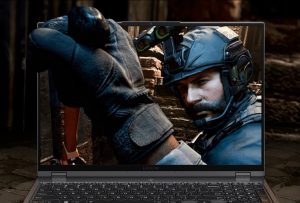
We saw good results in terms of thermals and clocks when it comes to long periods of heavy gaming or stressing with some specific software. The cooling solution is doing its job well and it keeps the CPU reasonably cool while the clock almost reaches 3.6 GHz. The same goes for the GPU – in prolonged loads, it hits 77°C while the core reaches 1812 MHz – perfectly fine. Now, the shell thermals are a whole other story, the WASD section and the palms rest area stay reasonably cool all the time but the other part of the laptop gets too hot when the device is stressed.
The Lenovo Legion 5i Pro (16″) is a solid gaming package. It has a good build quality, nice keyboard and touchpad, a 2560×1600 display, you can configure it with powerful hardware, and the cooling solution is doing its job in a good way. Like most devices, this one has its flaws and that will be the lack of SD card, as well as the fact that the shell warms up a lot during stress.
No matter its few cons, this machine is one of the good gaming offers on the market and it stands out among the others with the 16″ screen, aluminum build, and GPU options with big TGPs.
You can check the prices and configurations in our Specs System: https://laptopmedia.com/series/lenovo-legion-5i-pro-16/
Pros
- GPU variant with high TGPs
- Strong aluminum chassis
- 2x M.2 PCIe slots, 2x RAM SODIMM slots in dual channel, Wi-Fi 6
- Decent CPU/GPU thermals and clocks during gaming
- Covers 98% of the sRGB color gamut and has accurate color representation with our Gaming and Web design profile MNG007DA1-6 (CSO1606))
- Fast panel with quick response times MNG007DA1-6 (CSO1606))
- High resolution and high maximum brightness MNG007DA1-6 (CSO1606))
- Rich in ports I/O
- Great input devices
Cons
- No SD card slot
- Hot shell under stress
- A bit noisy during load
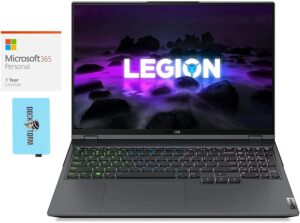




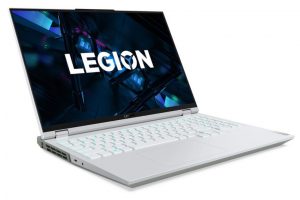
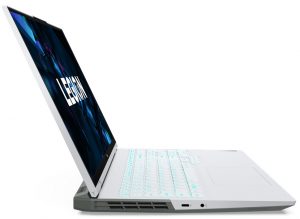

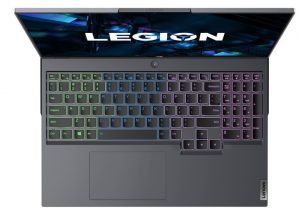
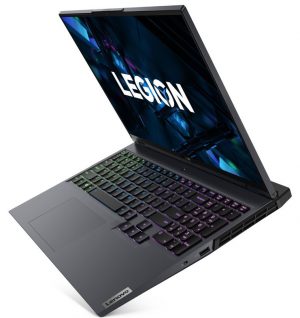
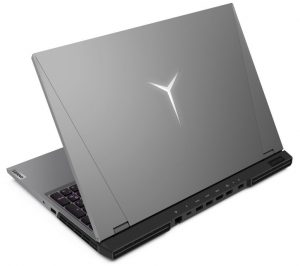

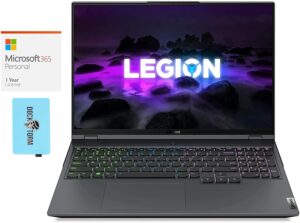
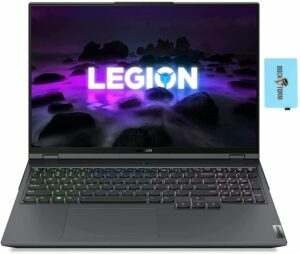


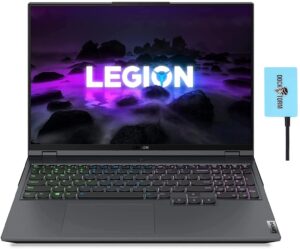
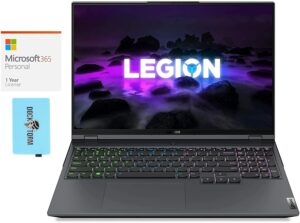

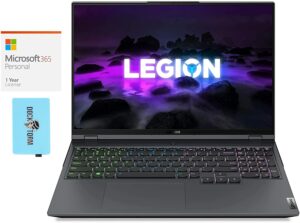

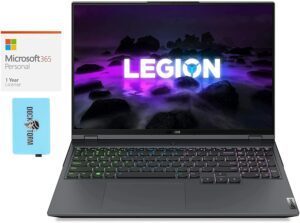

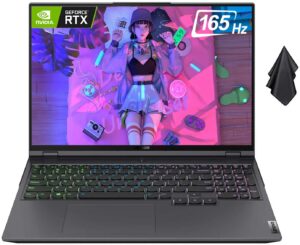
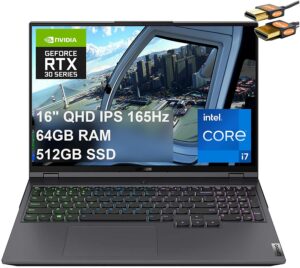
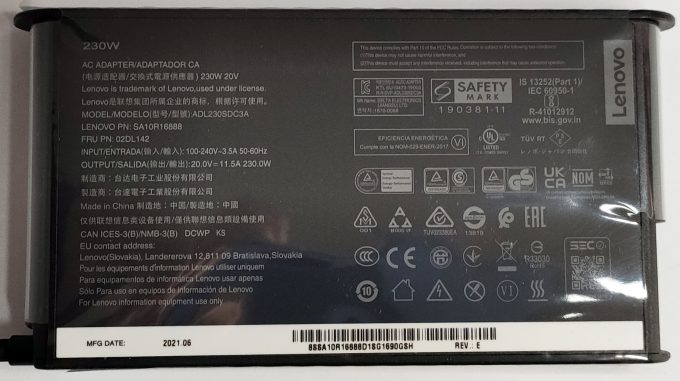
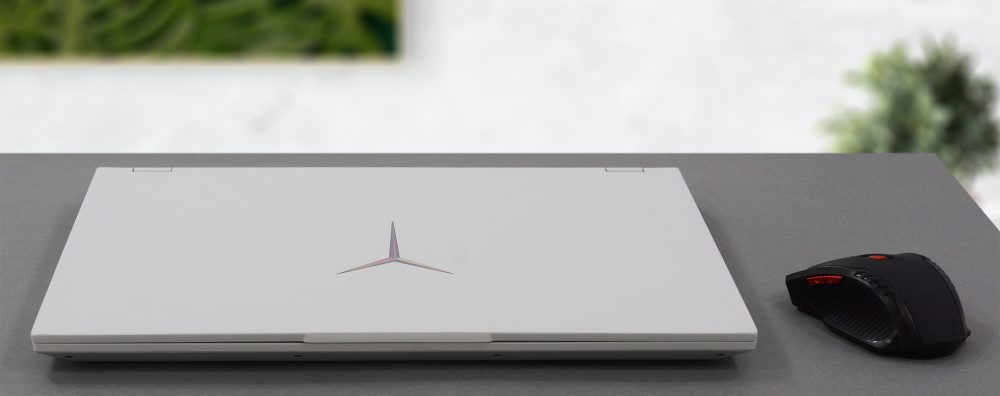
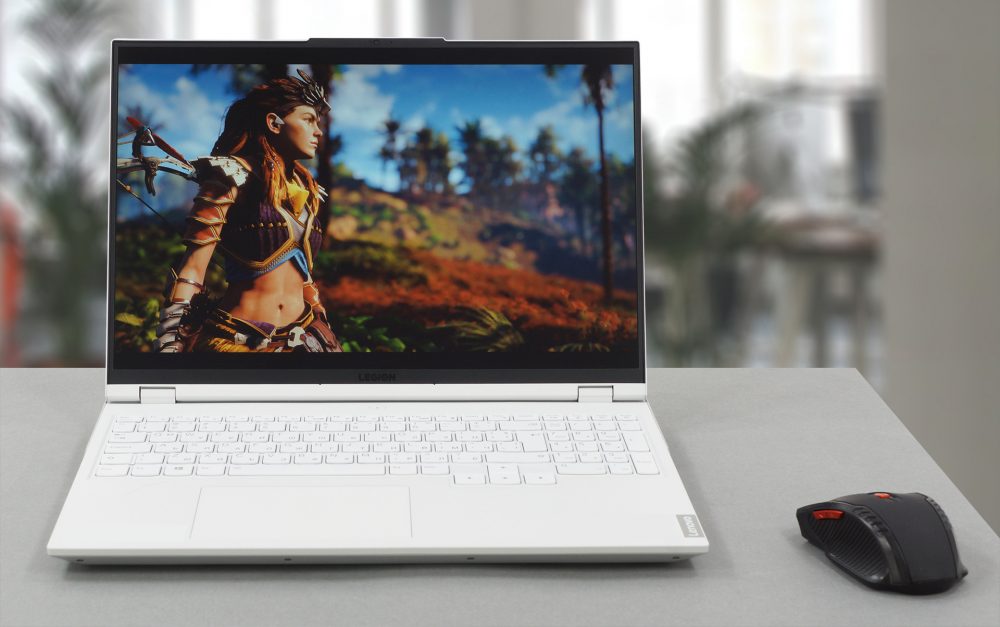

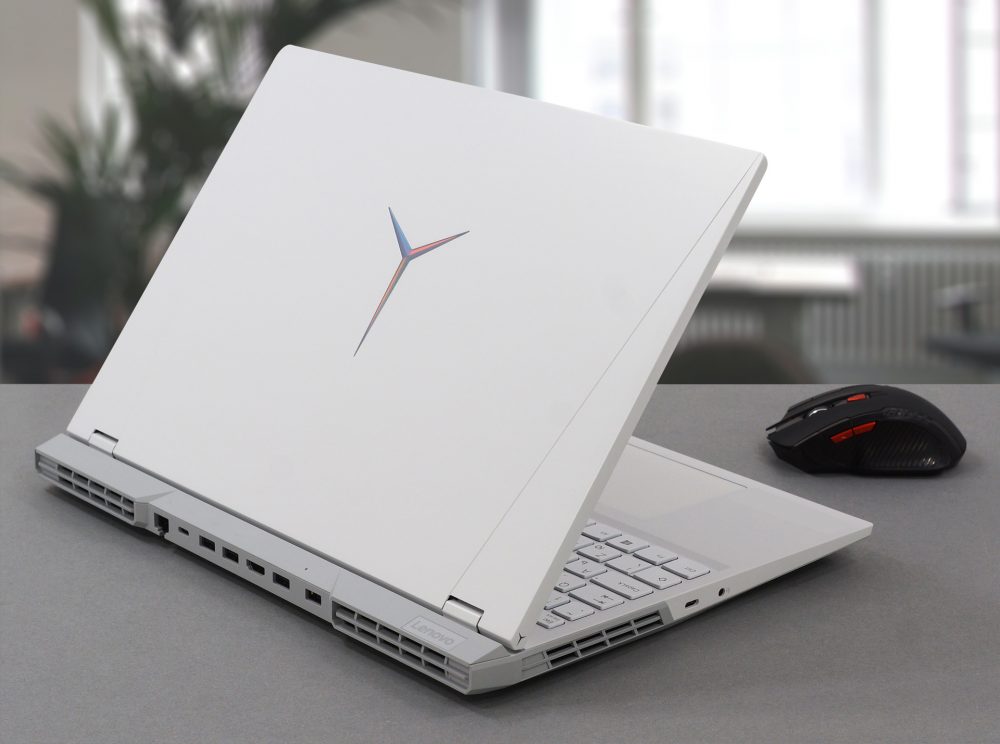
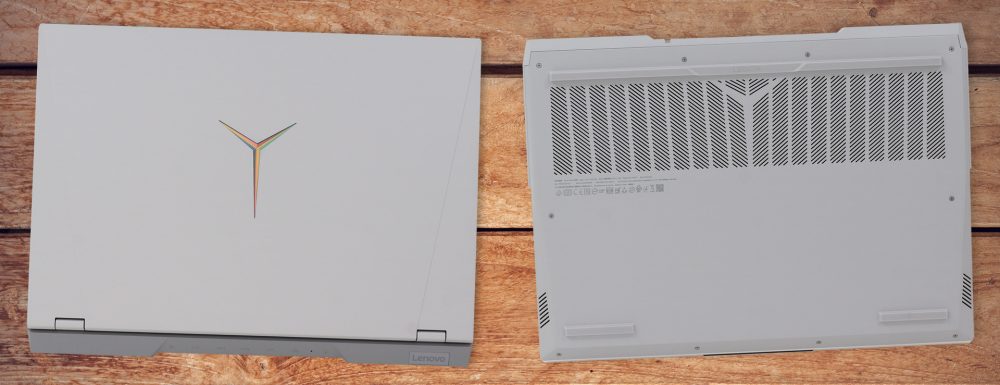



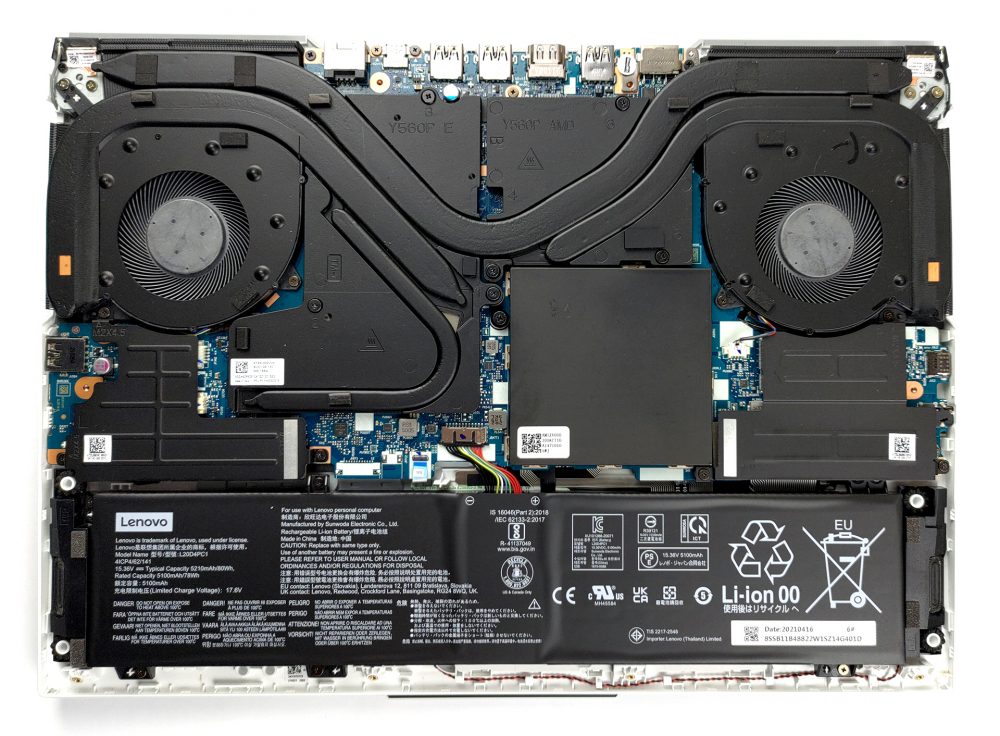

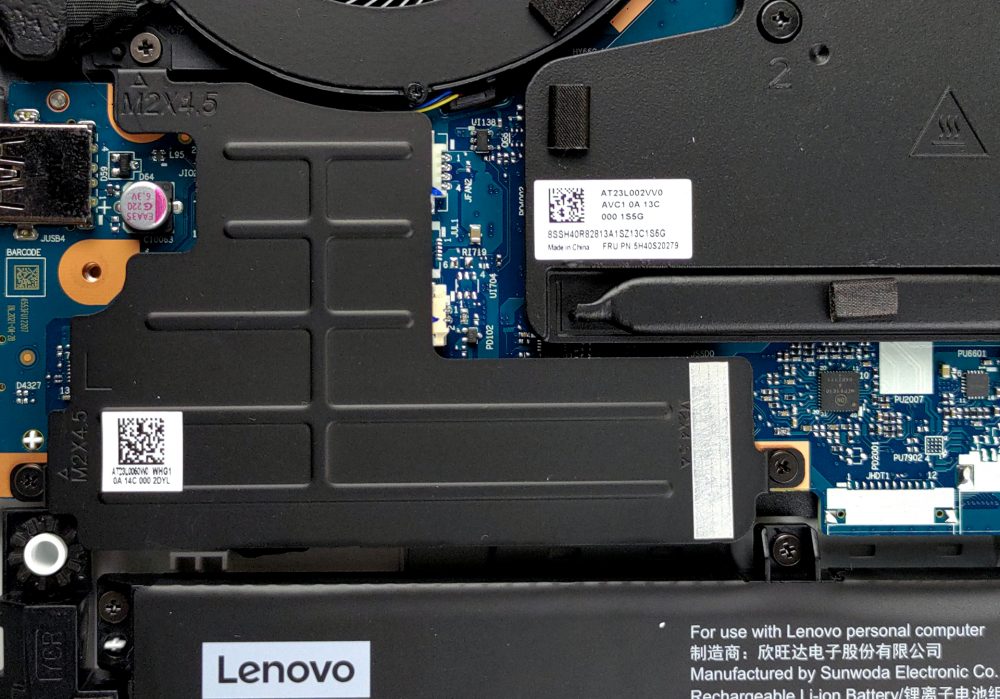

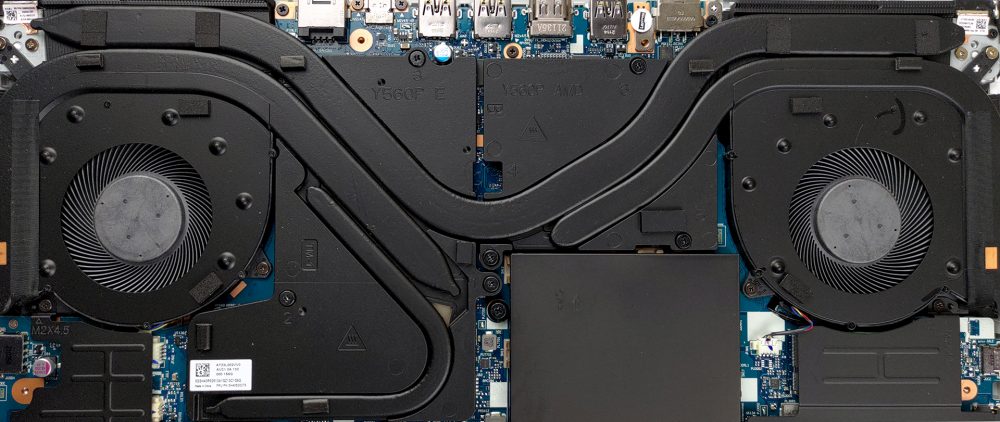
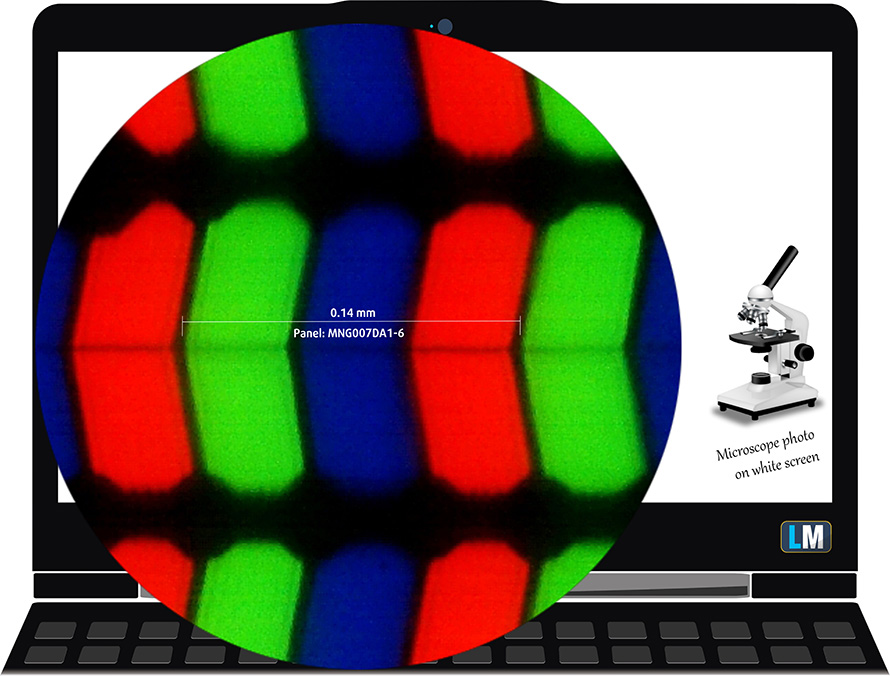

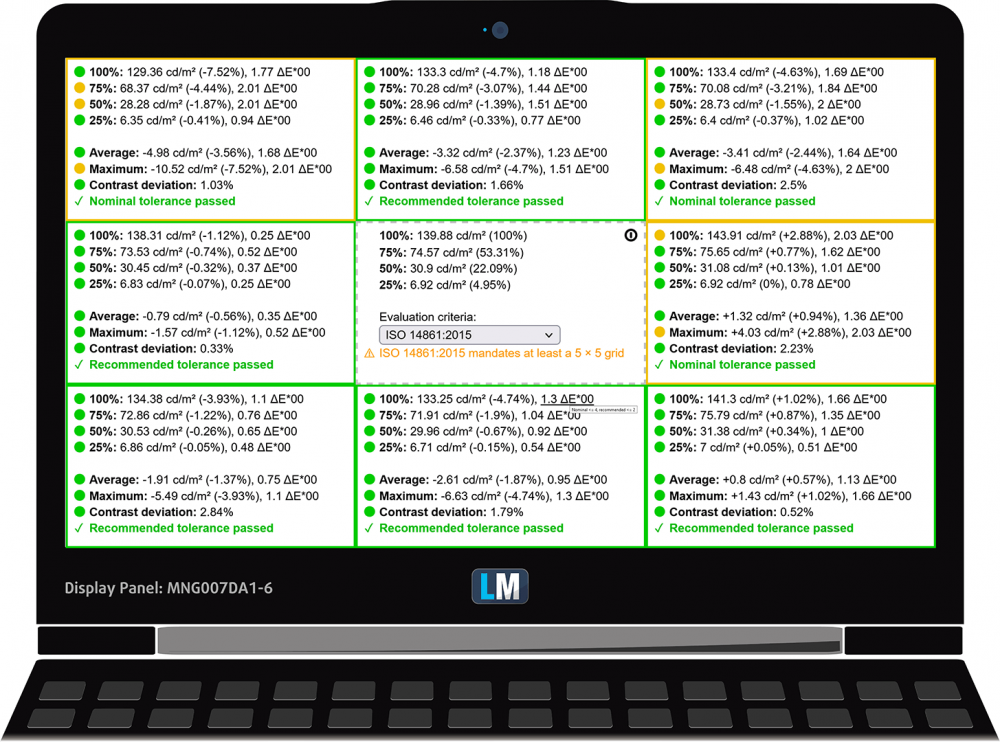

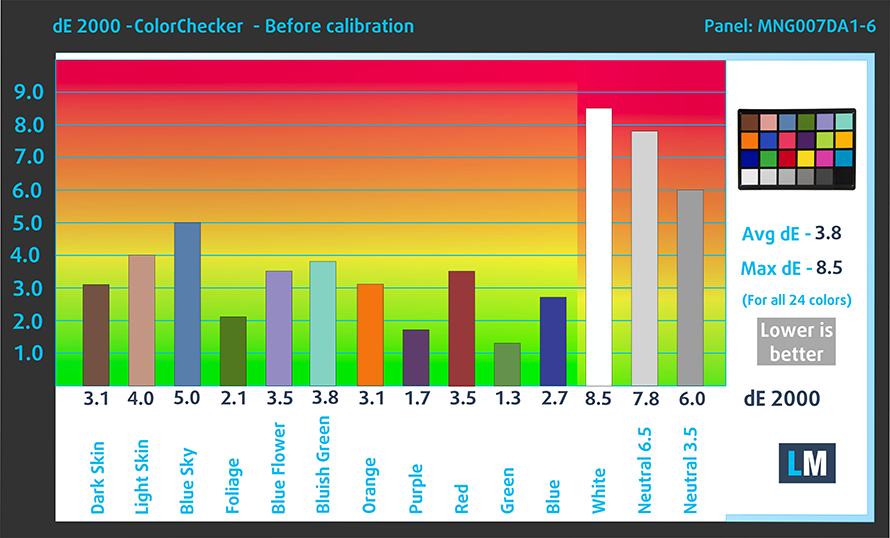

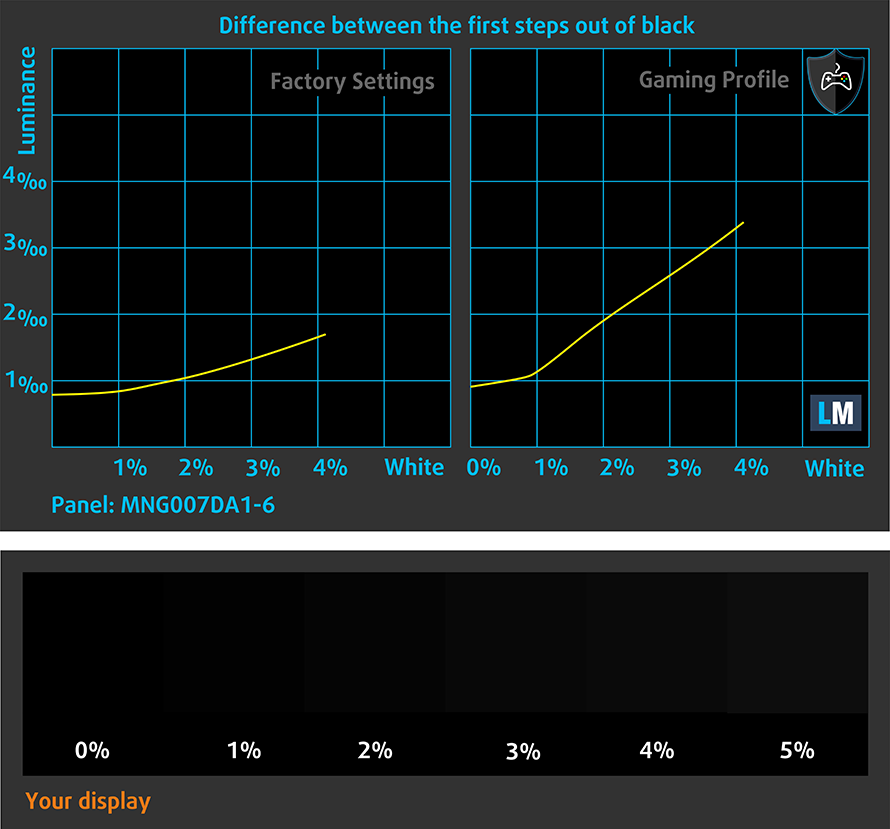

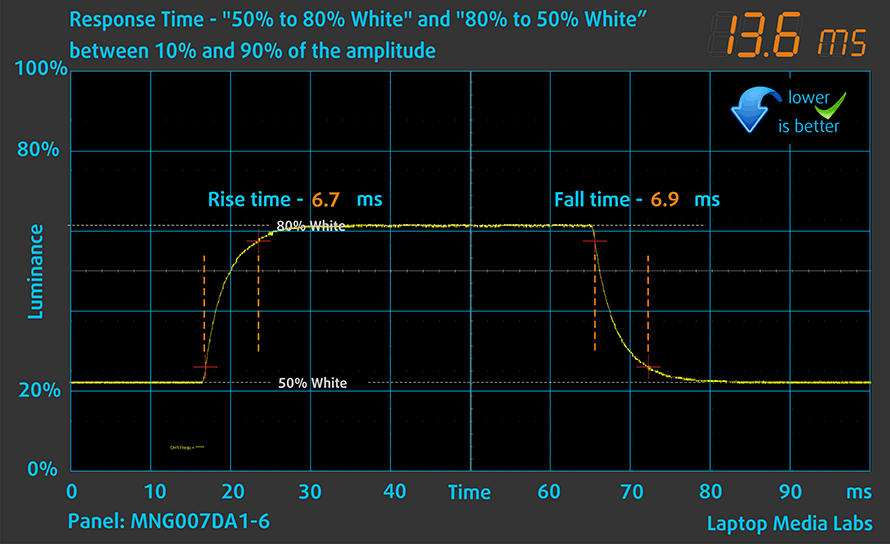




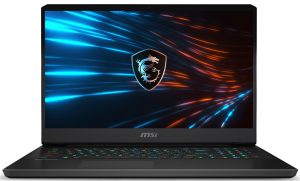
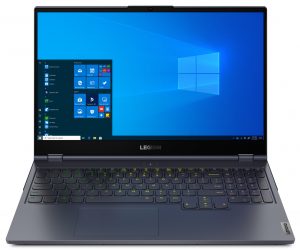
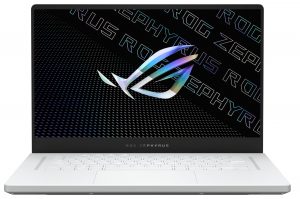
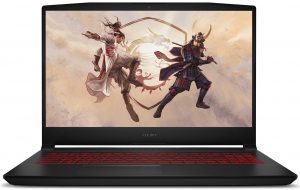












This (and all of your reviews) was really well laid out and insightful. I appreciate the work you put into this!